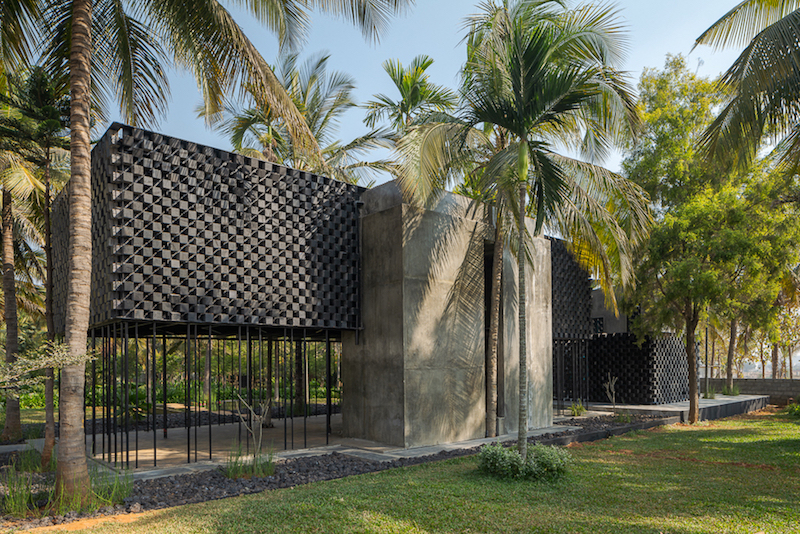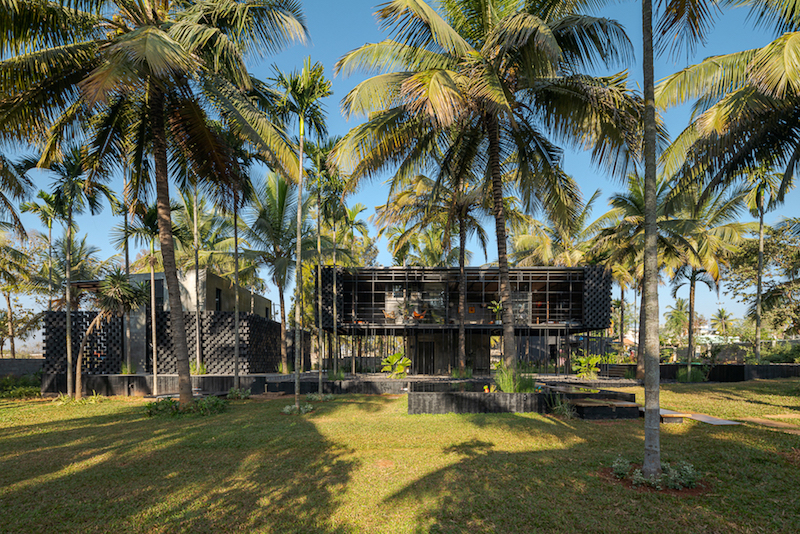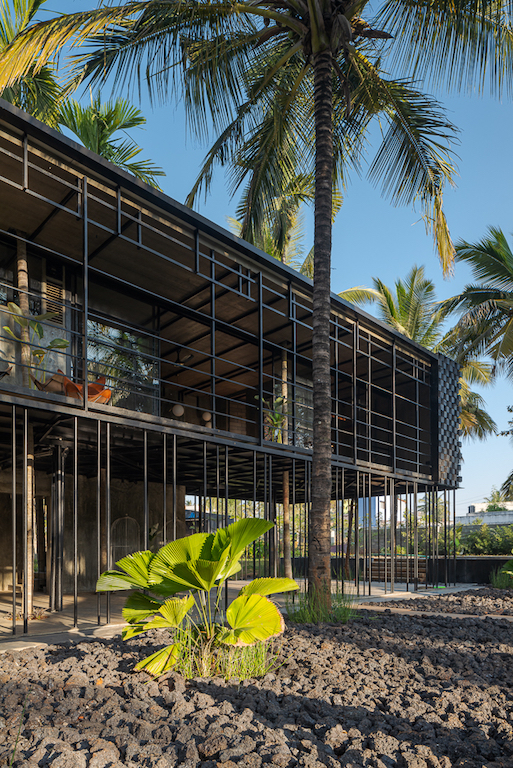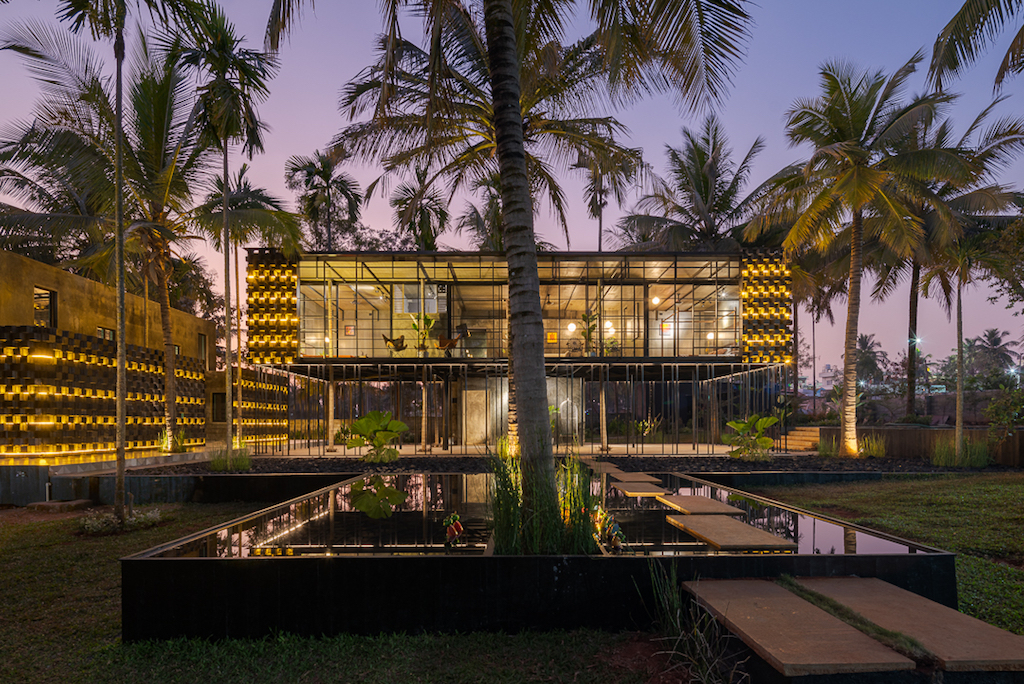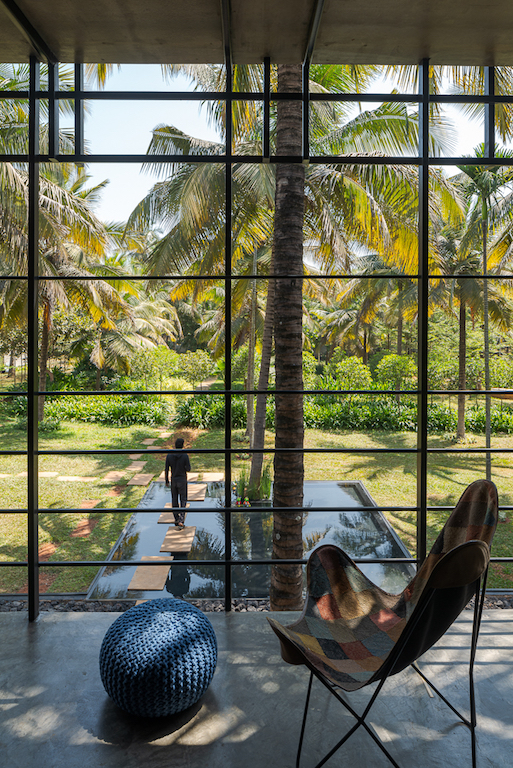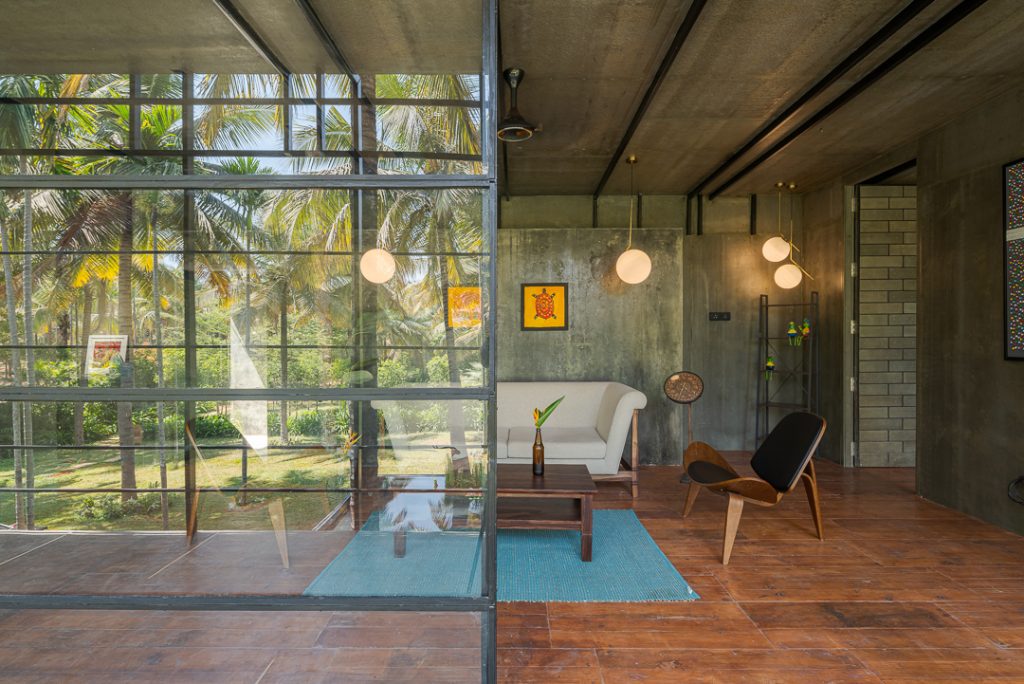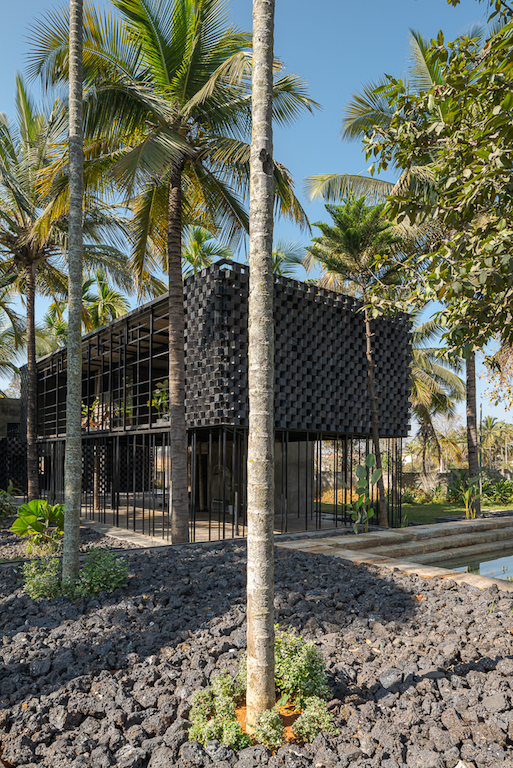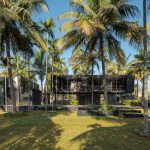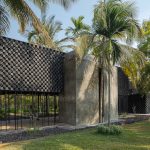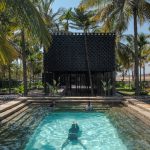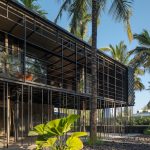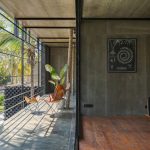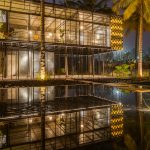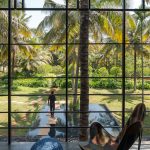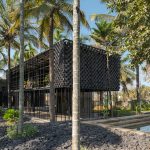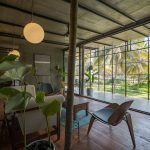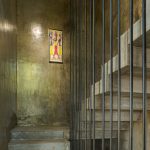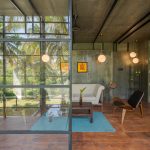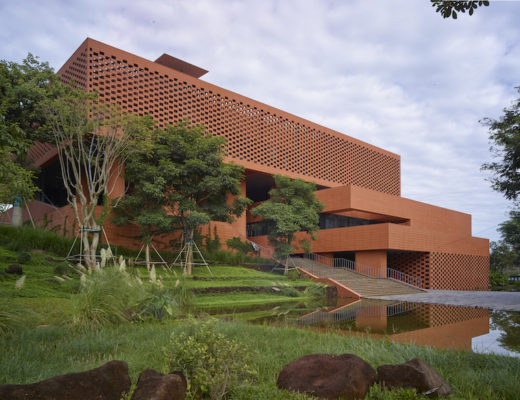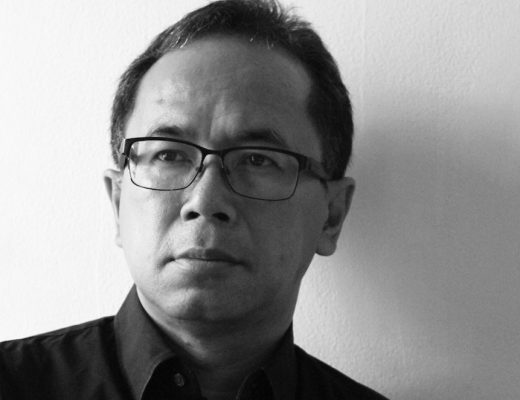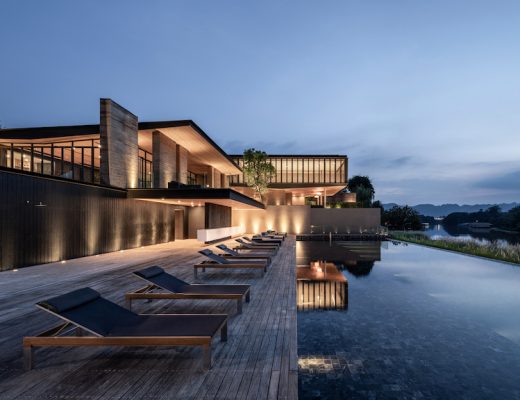Located on the outskirts of Bengaluru, the site is spread across 1.5 acre of flat land with coconut trees covering the whole site in a grid manner. The brief given to Parallax Architects, led by Raghunandan Gururaj and Nagendra Ramachandra was to design a weekend getaway that entailed a two-bedroom space within a budget. The initial plan was to plant a built form with minimal contact with the soil. This played an important role in the selection of materials that would address the concept in the most authentic manner. The final result led to a 564m² house which can be accessed from any direction, while the landscape serves as a natural pathway.
The linearity, sleek support and wide canopies of the trees within the site, inspired us to begin with the concepts of having similar linear support elevating the built space and minimal contact to the land. A lightly structured design paved its way, based purely on previously proposed landscape space. In doing so, both the built and unbuilt are celebrated together as a whole.
The objective was to build a weekend home amid the greenery, away from all the hustle and bustle of the city. The design process began with landscape elements filled with lush greenery and an existing stepwell. The built space is light and leaves minimal footprint as the material chosen to build was steel, thus elevating the building. This helped cause minimal interruption to the landscape.
The design brings about a well-balanced ratio of voids and solids, the built and the unbuilt, thus designing this project was a challenge as striking a balance came with certain conditions which meant having very minimal surface area used for built environment. “Our design team along with our structural consultant arrived at the site location with efficiently trained labourers to make the flimsy yet strong built environment a possibility,” explains the architect duo.
You might also like:
unTAG Architects designs low-impact and affordable luxury house for retired farmer in rural India
Full Scale Studio designs villa in rural Thailand with floating staircase in courtyard
Taking cues from the natural phenomenon of the transformation of a seed into a plant with shoots and roots, a similar principle has been applied to ensure the structural stability of the built space – using built yet stable space to support the unstable spaces. The aforementioned steel pipes are in a staggered formation on the surface along the periphery so as to provide rigidity stiffness and stability to the above living space.
This living space is covered by three layers of materials, the first being bison board, the middle sandwiched layer, a sheet of glass wool for thermal comfort and protection chosen to suit the climatic conditions of the site. The outermost layer is however capped using fly ash blocks to bring the temperature down to a cool and breathable condition.
See the full gallery here:
Photos: Praveen Mohandas

